Hypoglycemia Induces Diabetic Macrovascular Endothelial Dysfunction via Endothelial Cell PANoptosis, Macrophage Polarization, and VSMC Fibrosis
- PMID: 40650639
- PMCID: PMC12499442
- DOI: 10.1002/advs.202414530
Hypoglycemia Induces Diabetic Macrovascular Endothelial Dysfunction via Endothelial Cell PANoptosis, Macrophage Polarization, and VSMC Fibrosis
Abstract
Hypoglycemia is a commonly neglected complication in elderly diabetic patients, which can lead to cardiovascular events. Endothelial cell dysfunction is the primary inducer of cardiovascular events, and it is associated with hypoglycemia-triggered cytokine release and inflammatory programmed cell death. A comprehensive understanding of lineage-specific variations in pathological vascular changes is essential to mitigate cardiovascular events and ensure therapeutic efficacy. Herein, unbiased clustering analyses and single-nucleus RNA sequencing are performed on cells of the thoracic aorta in db/db and insulin-induced hypoglycemic db/db mice. Comparative analyses show changes in lineage-specific genes, subpopulation composition, intercellular communication, and molecular biology in hypoglycemic diabetic mice. The analyses also revealed the changes of different cells, particularly endothelial cell PANoptosis, macrophage inflammatory polarization, and vascular smooth muscle cell (VSMC) fibrosis. Pseudo-time sequencing, differential expression, and regulation network analyses revealed the association of potential hub genes Klf2, ETS2, Elavl1, C3, and Nr4a1 with the mentioned pathological processes. It is demonstrated that hypoglycemia induces VSMC fibrosis in vivo, whereas Angptl4 knockdown can attenuate VSMC fibrosis in vitro. These findings demonstrate the hypoglycemic macroangiopathy mechanism and provide important references for future disease intervention and treatment.
Keywords: ANGPTL4; PANoptosis; fibrosis; hypoglycemia; proinflammatory polarization.
© 2025 The Author(s). Advanced Science published by Wiley‐VCH GmbH.
Conflict of interest statement
The authors declare no conflict of interest.
Figures
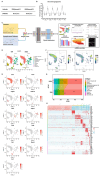
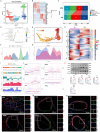
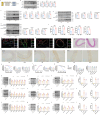
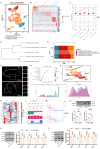
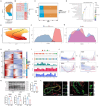
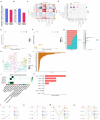


References
-
- Ong K. L., Stafford L. K., McLaughlin S. A., Boyko E. J., Vollset S. E., Smith A. E., Dalton B. E., Duprey J., Cruz J. A., Hagins H., Lindstedt P. A., Aali A., Abate Y. H., Lancet 2023, 402, 203.
-
- Dogra S., Dunstan D. W., Sugiyama T., Stathi A., Gardiner P. A., Owen N., Annu. Rev. Public Health 2022, 43, 439. - PubMed
-
- Hui T., Chunlin L., Linong J., Zhonghua Neifenmi Waike Zazhi 2022, 61, 12.
-
- Amiel S. A., Aschner P., Childs B., Cryer P. E., de Galan B. E., Frier B. M., Gonder‐Frederick L., Heller S. R., Jones T., Khunti K., Leiter L. A., Luo Y., McCrimmon R. J., Pedersen‐Bjergaard U., Seaquist E. R., Zoungas S., Diabetes Endocrinol. 2019, 7, 385. - PubMed
MeSH terms
Grants and funding
- 82305006/National Natural Science Foundation of China
- 82300477/National Natural Science Foundation of China
- CSTB2024NSCQ- LZX0079/Chongqing Natural Science Foundation Innovation and Development Joint Fund
- CSTB2024NSCQ-MSX0320/Chongqing Natural Science Foundation
- CSTB2022NSCQ-MSX0081/Chongqing Natural Science Foundation
LinkOut - more resources
Full Text Sources
Medical
Miscellaneous
